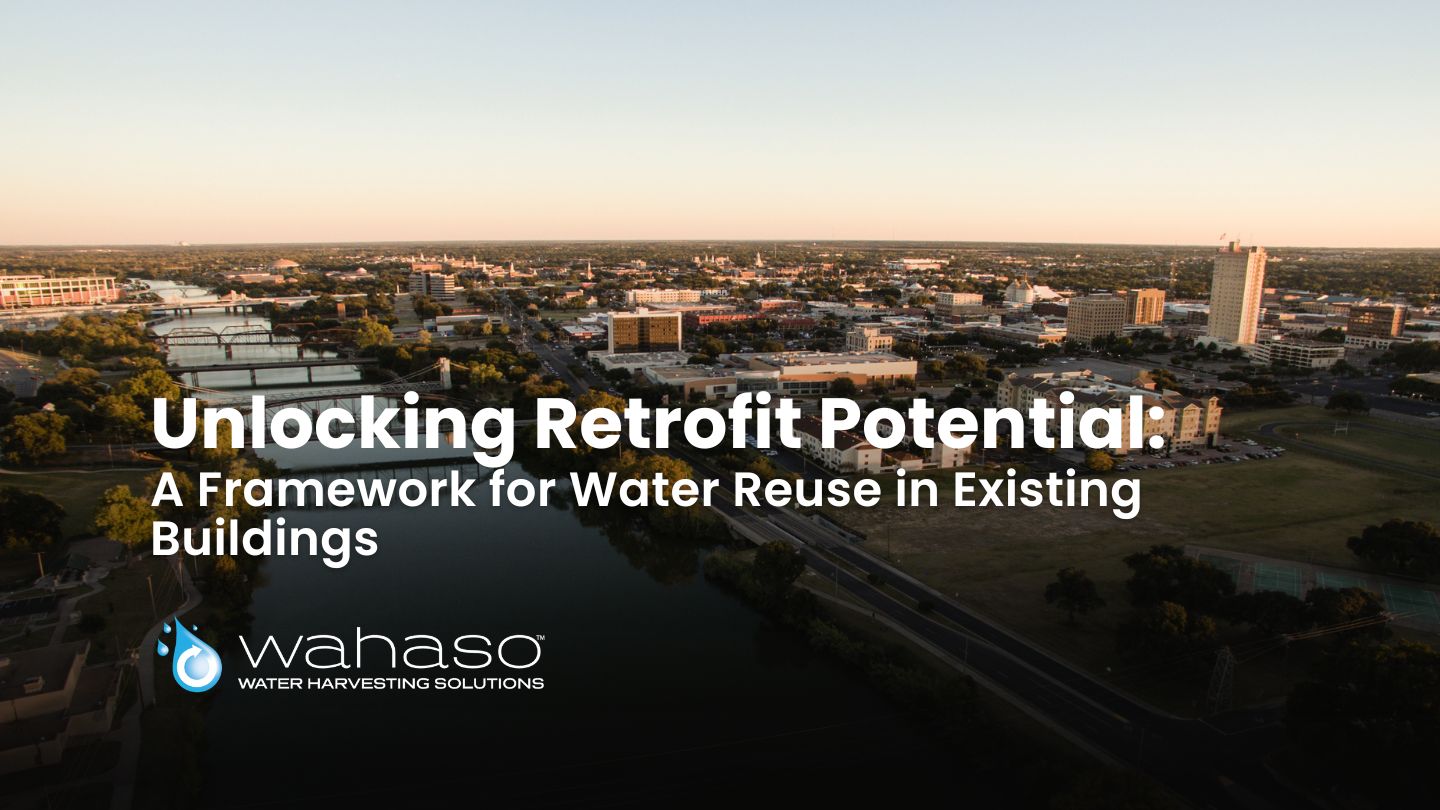Unlocking Retrofit Potential: A Framework for Water Reuse in Existing Buildings
The Hidden Frontier of Water Reuse
While new construction projects often dominate the conversation around water harvesting, the built environment tells a different story. In the United States alone, over 80 billion square feet of commercial floor space is already in use — much of it operating with legacy plumbing and cooling systems that predate current sustainability standards. Retrofitting these facilities represents a significant, and largely untapped, opportunity for water savings.
Market Drivers Behind Retrofit Demand
Several converging forces are pushing water reuse retrofits from “optional” to “inevitable”:
- Rising water and sewer costs – Utilities in many metropolitan areas are increasing rates annually, with some regions exceeding 8% year-over-year.
- Regulatory pressure – Municipalities such as Los Angeles, New York City, and Philadelphia have introduced stricter stormwater management requirements that impact both new and existing facilities.
- Corporate ESG mandates – Developers, universities, and corporate campuses are under mounting pressure to reduce water intensity and demonstrate measurable progress.
- Aging infrastructure – Cooling towers, irrigation systems, and domestic plumbing networks are reaching the end of their design life, creating natural inflection points for upgrades.
Where Retrofits Make the Most Sense
Water reuse is not one-size-fits-all. In retrofits, feasibility is typically strongest in facilities with predictable demand for non-potable water and viable sources for reuse:
- Cooling Towers – Blowdown recycling or make-up water substitution using stormwater or condensate.
- Toilet Flushing – Greywater, stormwater, and condensate can offset potable supply in dense facilities.
- Irrigation – Stormwater harvesting can virtually eliminate potable irrigation demand in landscaped campuses.
- Laundry and Process Loads – Multi-family housing, hospitality, and food processing can realize significant gains.
The Complexity of Retrofit Analysis
Unlike new construction, where system integration can be designed from the ground up, retrofit assessments must navigate existing site conditions. Factors include:
- Mechanical integration – Availability of space for treatment skids, cisterns, and pumping equipment.
- Distribution piping – Access to toilet flushing risers or cooling tower make-up lines without disruptive rework.
- Source variability – Seasonal fluctuations in stormwater or condensate yield.
- Economics – The interplay between capital costs, avoided utility expenses, and lifecycle savings.
The interplay of these variables often makes it difficult for owners and engineers to quickly determine if a retrofit is worth pursuing.
Introducing a Structured Assessment Tool
To address this complexity, Wahaso developed a Retrofit Feasibility Calculator — a structured framework for evaluating retrofit potential in commercial buildings. The tool allows professionals to input high-level project parameters (building type, available water sources, local utility costs, and site conditions) to generate a preliminary feasibility profile.
While not a substitute for detailed engineering design, this type of assessment provides:
- A first-pass filter to identify viable opportunities.
- Comparable scenarios for different water sources and end uses.
- A data-informed basis for early stakeholder discussions.
Implications for Stakeholders
- Owners and Developers – Better visibility into payback scenarios before committing capital.
- Engineers and Architects – A streamlined method to align clients’ sustainability goals with technical feasibility.
- Policy Makers – Insight into where retrofit adoption could be accelerated through incentives or regulation.
A Forward Path
The decarbonization conversation often overshadows the parallel urgency of water intensity reduction. Yet, the two are linked: every gallon conserved represents avoided energy for treatment and distribution. As retrofits become a focal point for sustainability strategies, decision-support tools that simplify feasibility analysis will be critical for accelerating adoption.
For practitioners interested in exploring this space further, Wahaso’s Retrofit Feasibility Calculator offers a practical first step toward quantifying potential opportunities.
Since 2004
Wahaso Mission
Our mission at Wahaso is to help municipalities and commercial property owners reduce the impact of their buildings on the environment through innovative and sustainable water practices.




